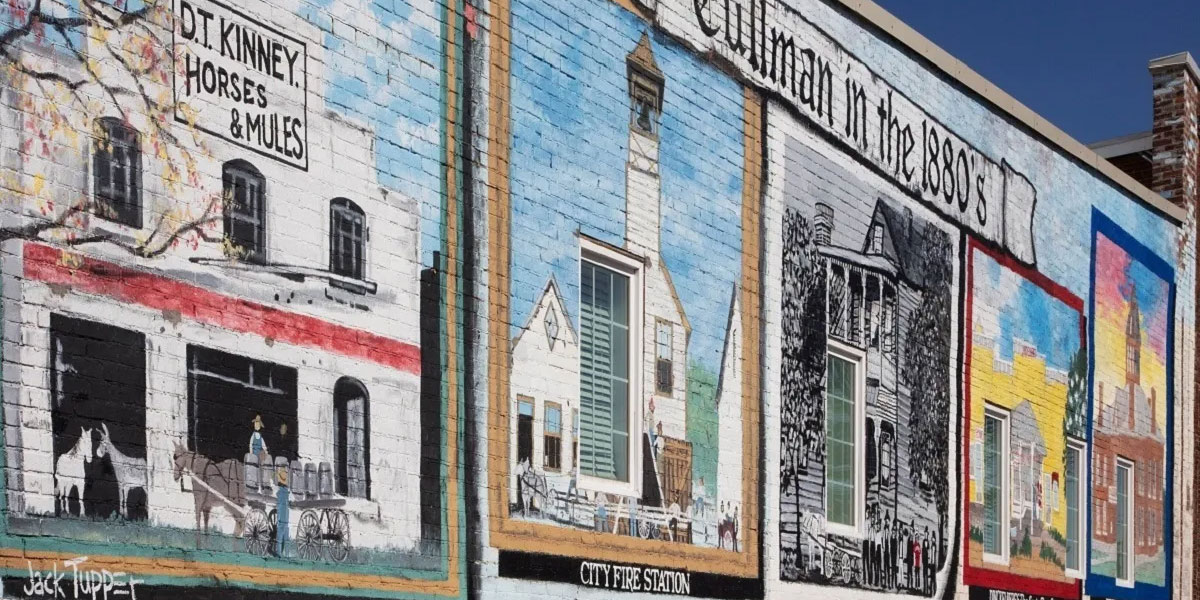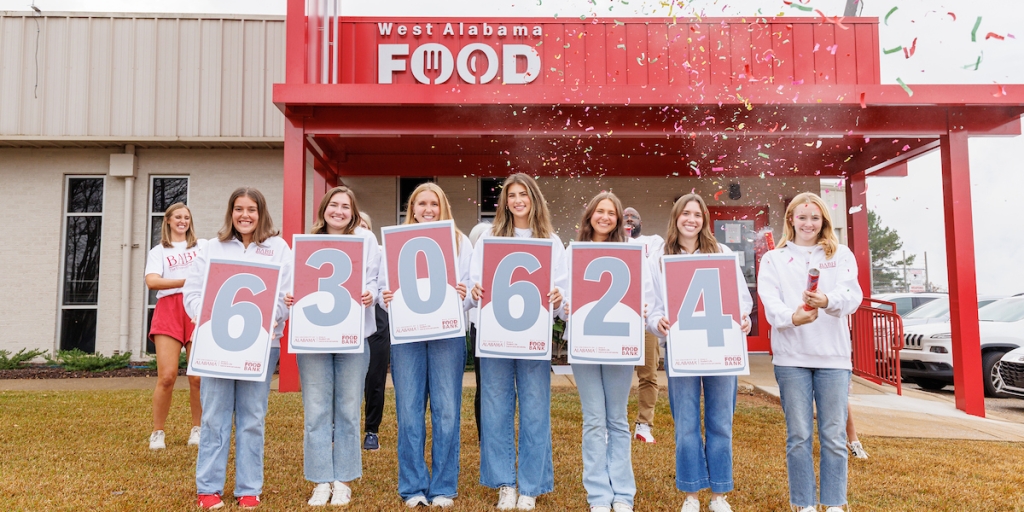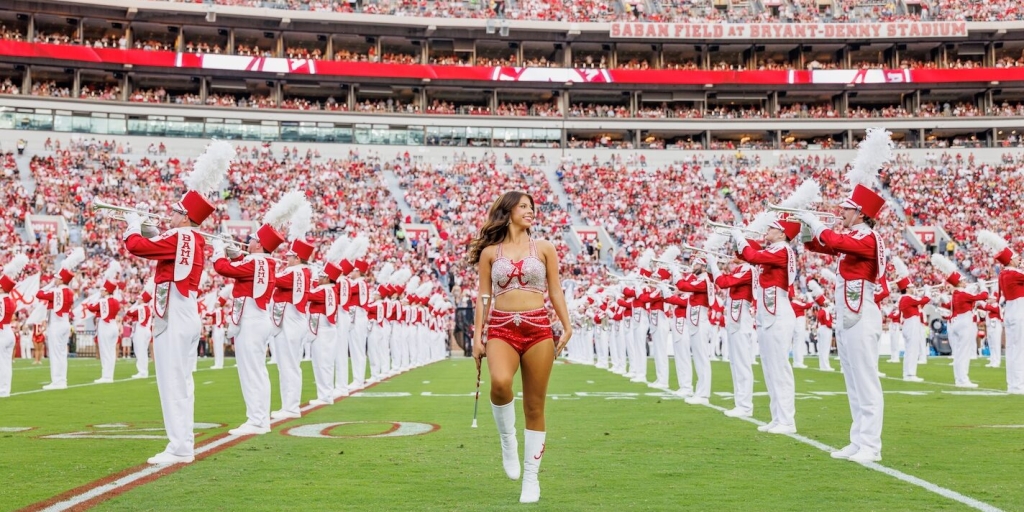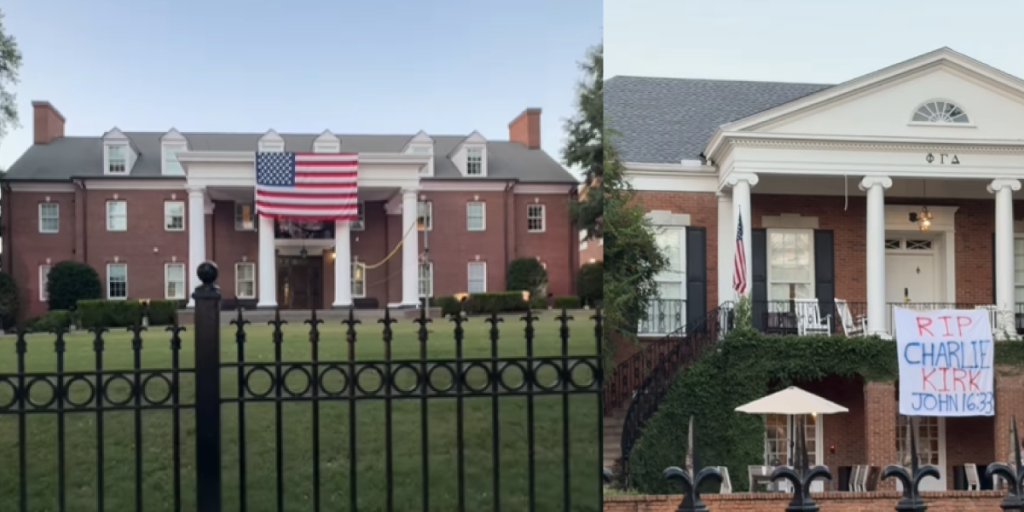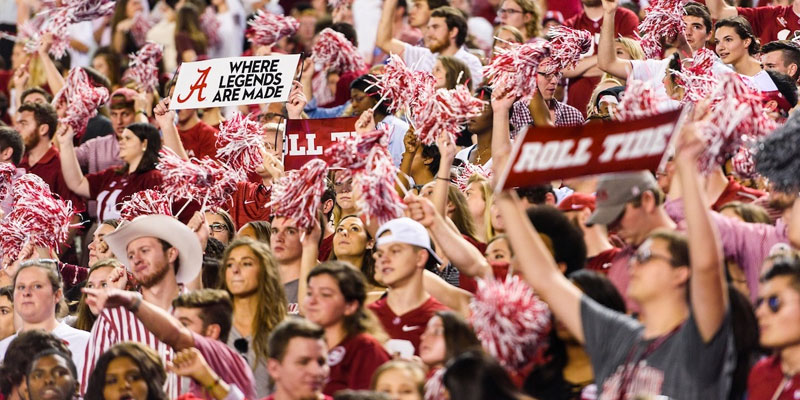An old steam locomotive pulls into downtown Valley Head, Alabama.
A cloud of pale gray smoke puffs out of its chimney, whistling as it billows through the vent cylinder and dissipates into a star-dotted, midnight blue sky.
Seemingly, the clacking, chugging sound of its churning wheels turns into a metallic screech as it brakes on the tracks, and white steam exudes from its sides with a loud hiss as it comes to a full rest outside the Valley Head Drugs store.
Or rather, on the Valley Head Drugs store.
The train mural on the wall of the drug store in the DeKalb County town is one of many murals throughout the state that make up the University of Alabama’s Alabama Mural Trail.
The trail encourages tourists and locals alike to explore the state’s rich culture and history through public art. UA’s Center for Economic Development in partnership with the Ala-Tom RC&D Council, the Alabama Mountain Lakes Tourist Association and the Alabama Tourism Department, is heading the project to create a greater sense of community, drive economic impact and bring people together.
“When the world feels divisive, murals offer an element of unity,” said Candace Johnson-Beers, the center’s director of tourism and community development. “Murals can cross social boundaries, economic boundaries, physical abilities and even language barriers.”
The trail offers a diverse set of murals in urban and rural areas spanning the state. People following the trail will find depictions of Alabama history and cultural highlights ranging from the civil rights movement to a scene from prized Alabama author Harper Lee’s “To Kill a Mockingbird.”
“There are so many unique murals around the state that show off Alabama’s history, culture and arts,” Johnson-Beers said. “Alabama is home to some wonderful small communities, and we wanted to make sure they are featured just as much as our larger ones.”
Johnson-Beers said murals can reinvent public spaces and have long-term positive effects on communities through placemaking, an approach to planning and design that involves the community and creates a space that promotes public health and happiness.
“Public art can drive significant economic impact by attracting tourists who spend their dollars locally, as well as potential new residents and business investors looking for a dynamic new place to live and work. We’re hoping that this trail inspires city leaders to invest in murals in their own communities.”
The project is working to incorporate all 67 Alabama counties in the trail and is seeking new mural submissions at www.uaced.ua.edu/mural.
Those traveling the trail are asked to take photos with the murals and post them on social media with the tags @alabamatourist on Facebook and Instagram, and #SweetHomeMurals.
This story originally appeared on the University of Alabama’s website.
(Courtesy of Alabama NewsCenter)




